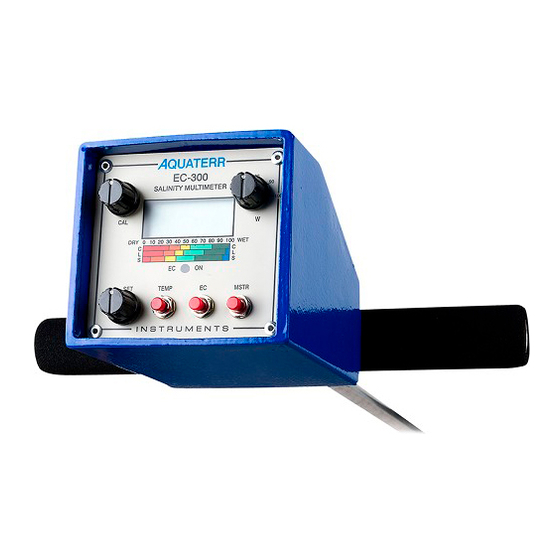AQUATERR INSTRUMENTS T-300 Manuale d'uso - Pagina 3
Sfoglia online o scarica il pdf Manuale d'uso per Strumenti di misura AQUATERR INSTRUMENTS T-300. AQUATERR INSTRUMENTS T-300 11.

It is important to read these
M, T & EC -300 meters.
Always know what you are probing into. Be careful not to probe into power lines, drip tubing,
gas lines, and other objects that may be invisible from the surface.
Do not try to force the probe into rock or hard soil. The handle is provided to help in probe
removal, forcing may result in bending or breaking the probe or cause damage to the
sensing area. Sharp rocks can damage the sensor. To determine the moisture content of
areas with a hard cracked surface, first break through the hard layer with a shovel, and then
insert the probe, If the ground is still too hard, use an auger or a pipe to create the hole.
Do not hit the meter end. This may result in loss of calibration or destruction of your meter.
Do not cut the roots of plants, if avoidable. Insert the probe with the flat edges parallel to the
roots. Test the soil under plants by inserting the probe at an angle. Be especially careful of
the tap root, the major root running directly under the plant.
Do not leave the probe in the soil. If the probe is left in the ground, it can loose intimate
contact with the soil resulting in incorrect reading.
Guidebook
The Aquaterr Instruments Guidebook explains how to use your meter to optimize your
irrigation practices by helping you to look at the relationship between plants, soil and moisture.
SAFETY PRECAUTIONS
3
before using the
